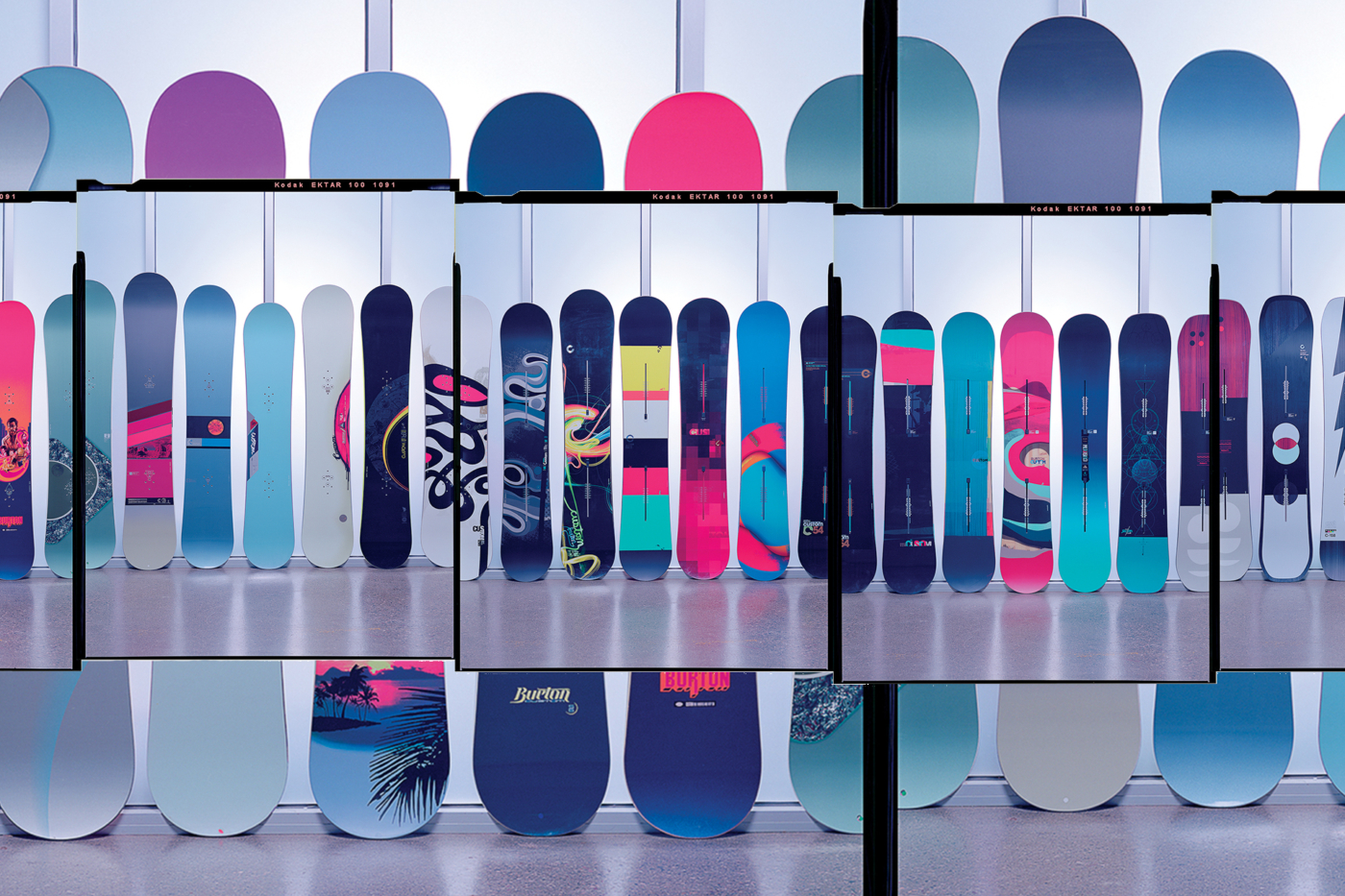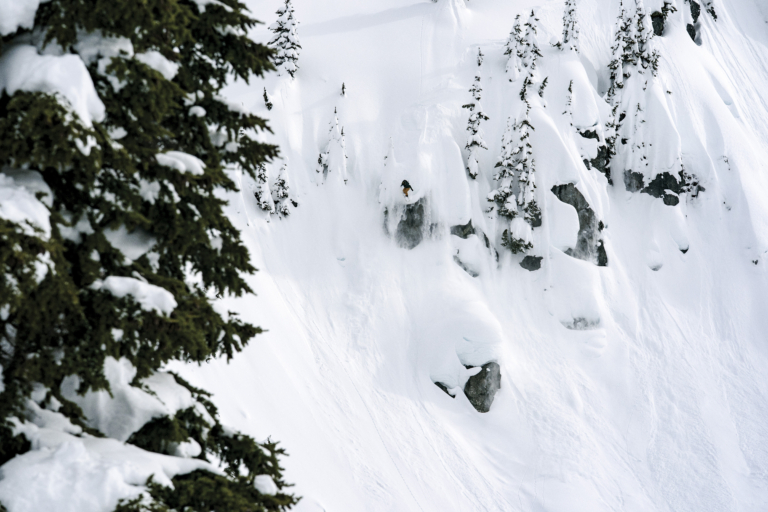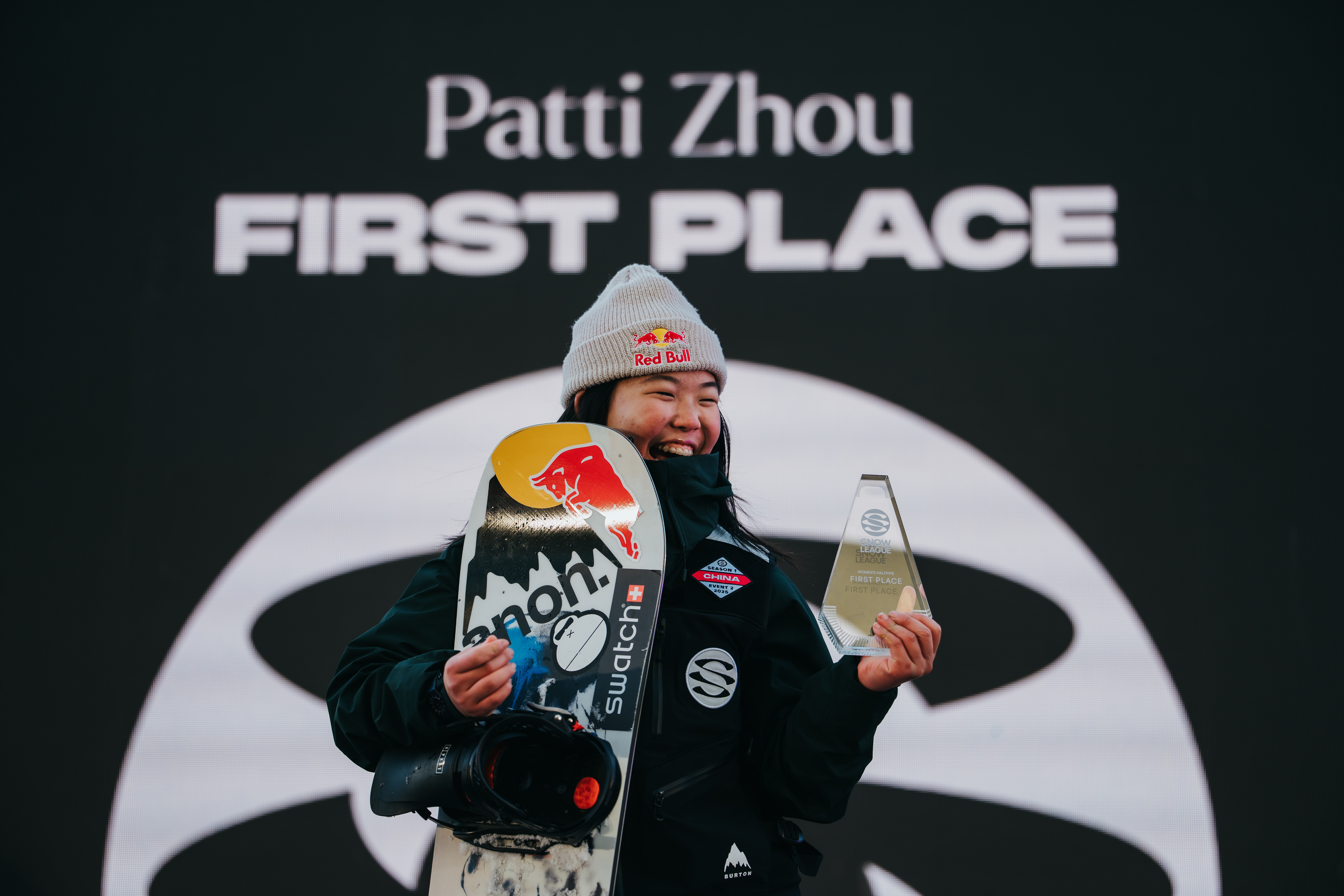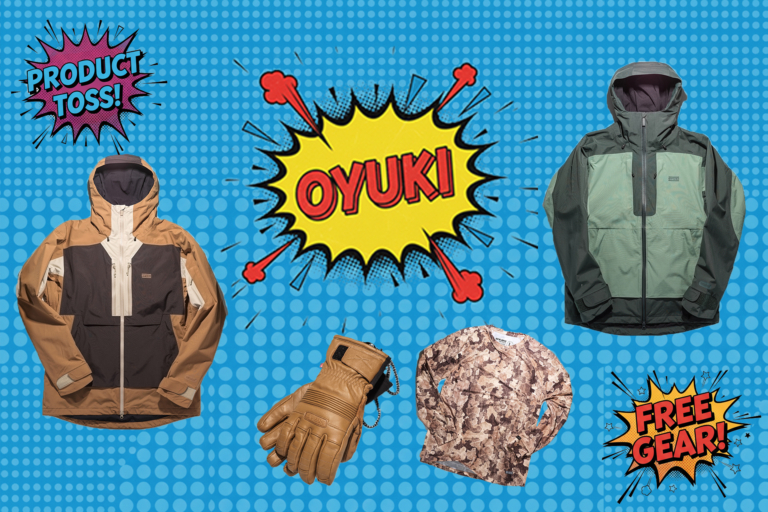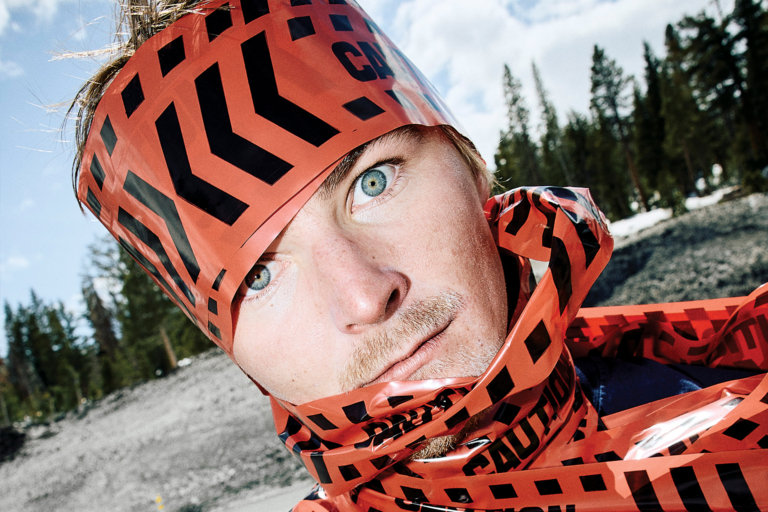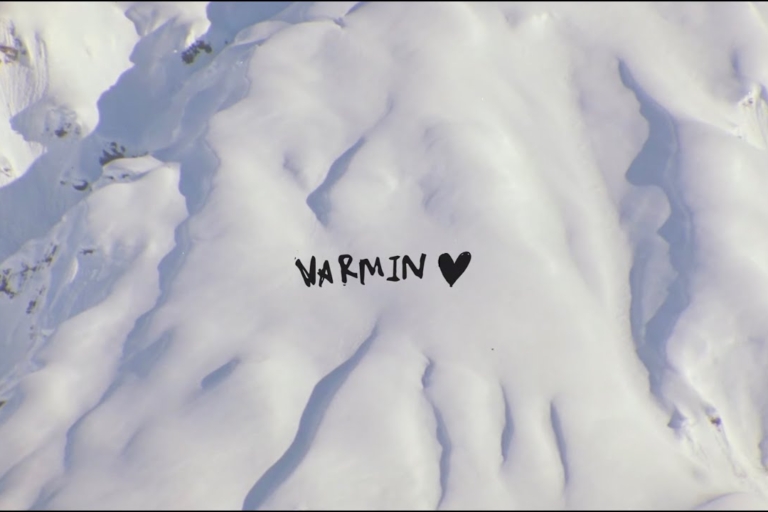Words by Mike Basher.

Introduced in 1996, the Burton Custom is the original quiver killer—the longest-running single model in snowboarding history. For three decades, it’s been the benchmark for all other freeride boards. Countless boards have come and gone, yet the Custom endures. So, what’s the secret? Was it just that good from the start? Was it ahead of its time? The short answer: A resounding YES.
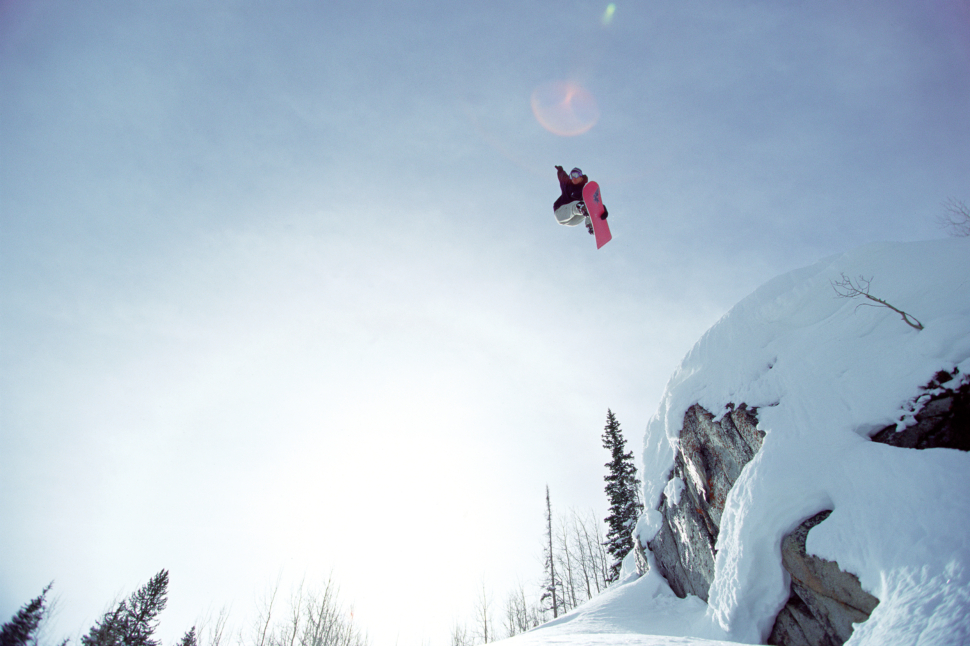
The Custom was born at a moment when pro models were king. In Burton’s 1995 lineup, your high-end options were the Twin, the directional Air, or a pro model with the name of Craig Kelly, Jeff Brushie, or Terje Håkonsen on it. So, Burton pro Joe Curtes and SoCal sales rep Dave Downing came up with a bold proposal: a high-end, all-mountain freestyle board, but without any single rider’s name attached.
This new board had to be freestyle-focused while still excelling at speed and in deep snow. The team went to work, taking everything they knew about tip and tail shapes, flex patterns, and stance references, and started pressing prototypes. In 1995, after testing fourteen different boards in New Zealand, alongside Burton’s head product tester John “JG” Gerndt and engineer Paul Maravetz, they had finally nailed a recipe they were truly excited about.
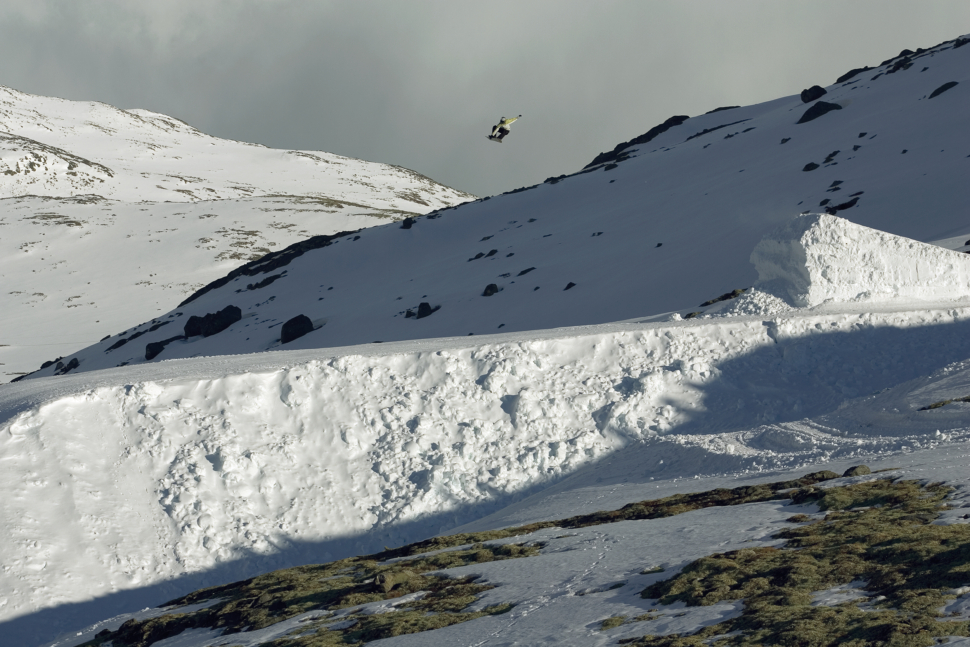
The result was (and still is) a twin flex on a twin sidecut, with a one-inch setback stance. The nose was slightly longer than the tail for float in powder, but the twin flex meant the Custom felt just as natural riding and landing switch. What’s most incredible, though, is that the Custom has remained virtually unchanged over its three-decade run.
“You can pull a 1996 Custom off the wall and go ride it, and be stoked,” says Downing. “It feels like home. While materials have advanced and tip profiles have seen slight tweaks, the core numbers are all the same: camber, sidecut, flex—everything.”
The Custom’s history is filled with legendary moments. It’s the board that Mads Jonsson used for his 187-foot frontside 3 in 2005. It was the ride of choice for Heikki Sorsa’s iconic Mack Dawg video parts and Mason Aguirre’s massive Olympic Michalchucks. Today, it’s still the board that Kaishu and Ayumu Hirano use for their mind-bending halfpipe airs and the platform for Mikkel Bang, Ben Ferguson, and Brock Crouch’s backcountry and slopestyle antics.
The Custom’s impact didn’t stop there. In 1998, Dave Downing encouraged his girlfriend at the time (now spouse of 26 years) Shannon Dunn, to develop a women’s-specific freeride board. “The Custom was our inspiration,” says Dunn. “We wanted a single board that could ride all types of terrain, and this directional camber board really did it all. We set out to create the ‘Custom for women.’”
Melding Shannon’s freestyle background with fellow Burton team rider Victoria Jealouse’s big-mountain style, they collaborated to create a board that met in the middle. In 1999, the Feelgood was born. While both had their own pro models, this new collaboration was designed not to be a woman’s board, but a board for all women.
So, what’s next for the Custom?
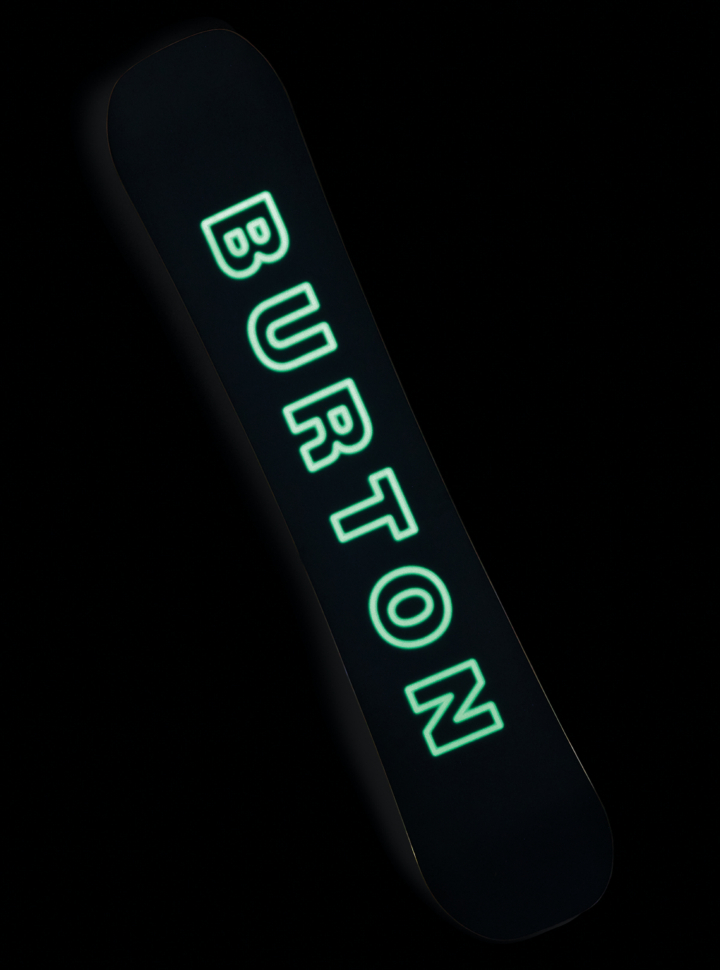
For its 30th anniversary, the current Custom has the same tried-and-true internals with a few graphic options: a timeless white, a neon-inspired glow-in-the-dark version, a Jungle graphic, and rumor has it you’ll want to keep an eye out for a few other sneaky drops this season, too.
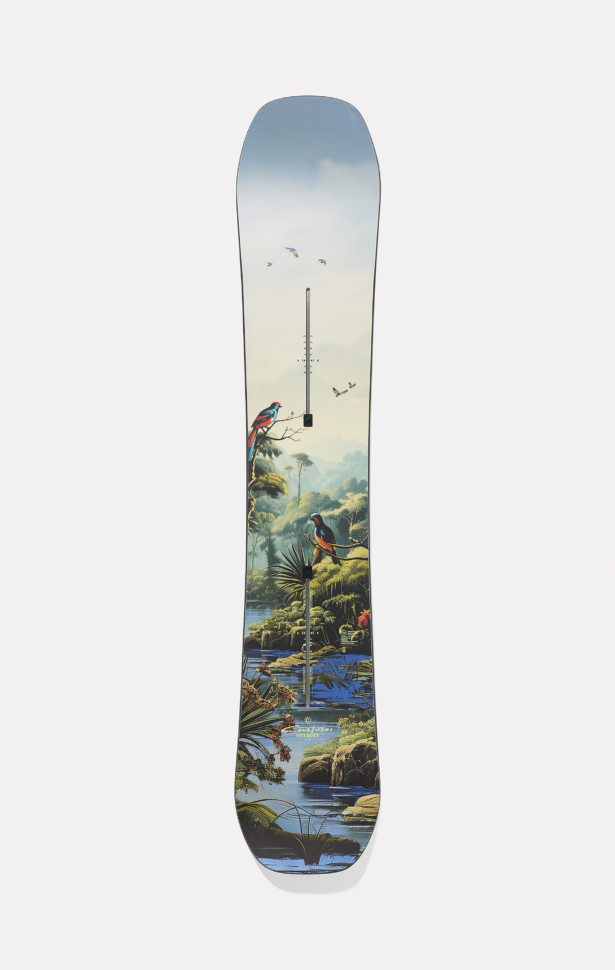
The Custom now has a full-blown family, with something for every rider: Custom Smalls (125-145cm), Custom (150-170cm Wide), Feelgood Smalls (130-145cm), and Feelgood (140-152cm).
To date, over 500,000 Burton Customs have been sold. It is the only board which has never left Burton’s line. It has starred in over 50 snowboarding films, from Mack Dawg’s The Meltdown Project to Burton’s newest movie Paved. The infallible Custom has graced 6 Olympic podiums, 9 X Games podiums, 9 US Open podiums, as well as countless other contests.
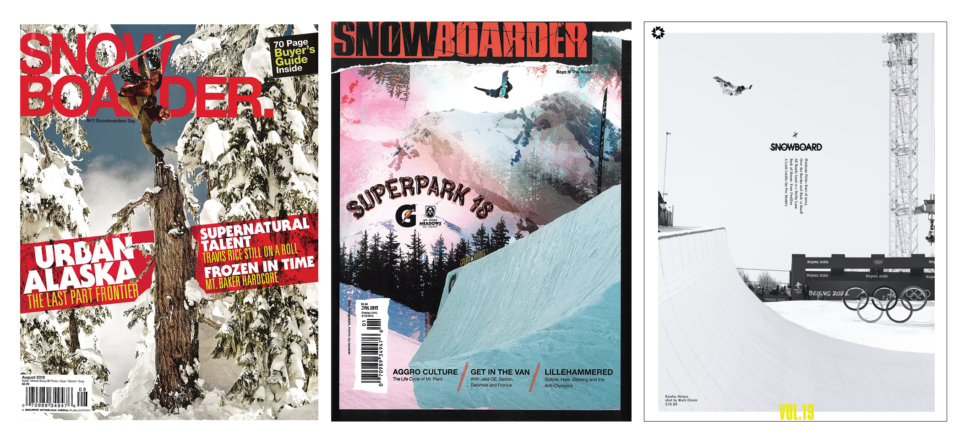
Was the Burton Custom ahead of its time? Time is the Burton Custom.
